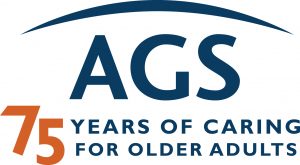 American Geriatrics Society Staff
American Geriatrics Society Staff
The mistreatment of older adults is called elder abuse. It is more widespread than many of us realize. Although statistics suggest that one in 10 older people is abused every year, the actual number is likely to be much higher because so many cases of elder abuse go unreported.
That’s why it’s so important for us to put elder abuse on our individual radars. Signs of elder abuse may not be immediately obvious. Members of our own families may be subject to abuse, as can our older neighbors, friends, and acquaintances.
No matter how old we are, justice requires that we all be treated as full members of our communities, say experts at the National Center on Elder Abuse. However, because some older adults are not visible to other members of the community, they can be at greater risk for being neglected or abused.
The range of situations that make up elder abuse is broad. Elder abuse can include neglect (both intentional as well as self-neglect), and abuse that is financial, emotional and psychological, physical, and/or sexual. These are all forms of injustice we need to address to better serve our communities.
As difficult as it might be to realize that an older person is being abused, it may be even more difficult for us to report it—we may fear that we’ve misunderstood a situation or are overreacting. Trust your instincts. If you suspect that something isn’t right, act.
Signs of neglectful abuse include:
- Lack of clean clothing
- Clothing that’s inappropriate for the weather
- Lack of basic personal hygiene
- A home that is dirty, cluttered, contains fire or safety hazards, or needs basic repairs
- A home that lacks basic utilities (electricity, working plumbing, heating/cooling)
Signs of financial abuse or exploitation include:
- Unusual spending or withdrawals from an older adult’s bank account
- Frequent purchases of unusual items
- Unpaid bills or utilities getting turned off
- A new person or people in the older person’s life who accept generous gifts, “loans,” or other financial or property benefits
Signs of physical abuse include:
- Bruises, especially those shaped like a hand, finger, or thumb
- Unexplained burns, cuts, sores, or other injuries
- Seeing or hearing that an older adult has been denied enough food or water, necessary medications, or needed devices (canes, walkers, hearing aids, glasses, etc.)
- Learning that an older person has been given unnecessary tranquilizers or sleeping pills, or that they’ve been confined to a wheelchair or bed without an appropriate reason
Emotional/psychological abuse includes:
- Yelling or intimidation
- Making threats
- Humiliating or ridiculing someone
- Isolating an older person from friends or loved ones, or keeping them from activities they enjoy for no good reason
Signs of sexual abuse include:
- Unexplained genital or anal bleeding
- Torn or bloodied underwear
- Bruises around the breasts or genitals
We are our communities’ best resources for helping prevent elder abuse. Understanding what makes up elder abuse, and knowing how to report it, can help prevent injustice now and in the future.
We can all help ensure that older adults are fairly treated. We can make sure that remains a reality for all of us as we age by reporting signs of abuse to an Adult Protective Services Agency. If you suspect that someone is in immediate danger, call 911 for help.
